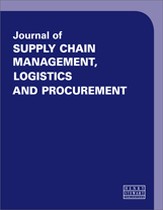Inventory optimisation: Driving cash flow forward with the Part C Squared Model
Abstract
In a rapidly evolving market landscape characterised by volatile demand and intricate supply chain dynamics, effective inventory management is paramount for ensuring robust cash flow and overall financial sustainability. This paper presents the Part C Squared Model, a strategic framework aimed at optimising inventory levels while simultaneously strengthening cash flow through four essential pillars: predictability, availability, resiliency and transparent linearity, all directed towards the dual objectives of cash and cost efficiency. Each pillar is fortified by sophisticated statistical methodologies and comprehensive supplier management practices, facilitating a systematic approach to inventory oversight. Illustrative application of this model across different manufacturing type units demonstrated potential for notable decreases in raw material inventory (over US$300m to under $250m range). The integration of cutting-edge digital technologies, including interconnected enterprise resource planning (ERP) systems and real-time data analytics, enabled enhanced visibility and agility in response to market fluctuations. Key performance indicators (KPIs) were established to monitor inventory health and cash conversion metrics, yielding a holistic perspective of operational efficacy. Despite significant inventory reductions, resulting cash flow improvements remained modest (approximately US$2m growth). This finding underscores the intricate interplay between inventory optimisation and cash flow dynamics, highlighting the necessity for alignment among inventory strategies, sales velocity and payment terms. The insights derived from this study based on a simulated implementation emphasise the importance of a comprehensive approach to supply chain management, positioning inventory optimisation as a critical lever for enhancing cash flow. This paper not only enriches theoretical discourse in supply chain management but also offers pragmatic implications for organisations navigating the complexities of contemporary inventory challenges.
The full article is available to subscribers to the journal.
Author's Biography
Ruben Favela Dr Ruben Favela is a supply chain executive with 18 years’ cross-sector experience in automotive, industrial, and transportation industries. Specialised in deploying lean operational models, inventory optimisation, and strategic supplier partnerships, he has led global initiatives reducing working capital while ensuring supply resilience. His expertise spans composite manufacturing, low-volume/high-mix production, and digital supply chain transformation. Ruben has received multiple industry innovation awards and holds intellectual property in advanced manufacturing processes.
Citation
Favela, Ruben (2025, September 1). Inventory optimisation: Driving cash flow forward with the Part C Squared Model. In the Journal of Supply Chain Management, Logistics and Procurement, Volume 8, Issue 1. https://doi.org/10.69554/LRWO7861.Publications LLP
